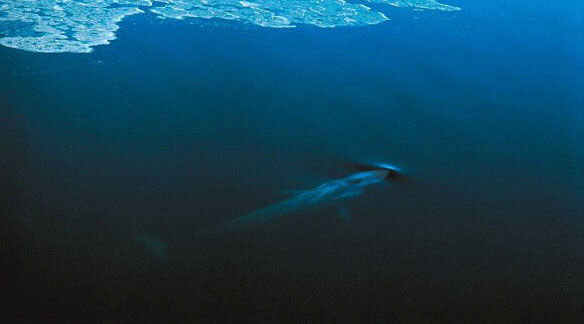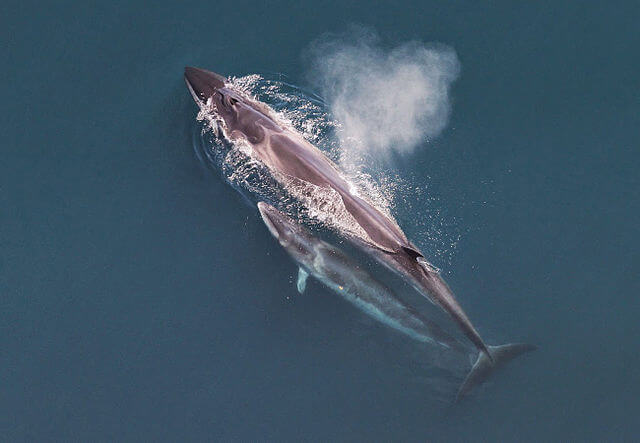Where do the giants of the St. Lawrence go?
It all depends on the species. Humpback whales of the Northwest Atlantic gather in the Caribbean in the winter, then disperse in summer to different feeding areas including the Gulf of Maine, the coasts of Newfoundland or the St. Lawrence. A US study based on the detection of fin whale vocalizations has shown that this species is found throughout the North Atlantic year round. The study also revealed a gradual northward movement of animals in the spring and southward in the fall, though no large congregations. With regard to blue whales, “acoustic spying” has revealed their presence from the Grand Banks of Newfoundland to Bermuda. Other individuals have also been spotted in the St. Lawrence in the middle of winter, risking their lives to feed amongst the ice floes.
Researchers have observed that Pacific blue whales return to the same places every year and on similar dates. Curiously, their feeding grounds are not necessarily the most productive areas. Rather, they are the most predictable ones. By favouring stability over quantity, blue whales avoid unpleasant surprises in a highly variable ecosystem. Blue whales are able to benefit from this strategy because they have a life expectancy of 80 years, which allows for long-term learning.


